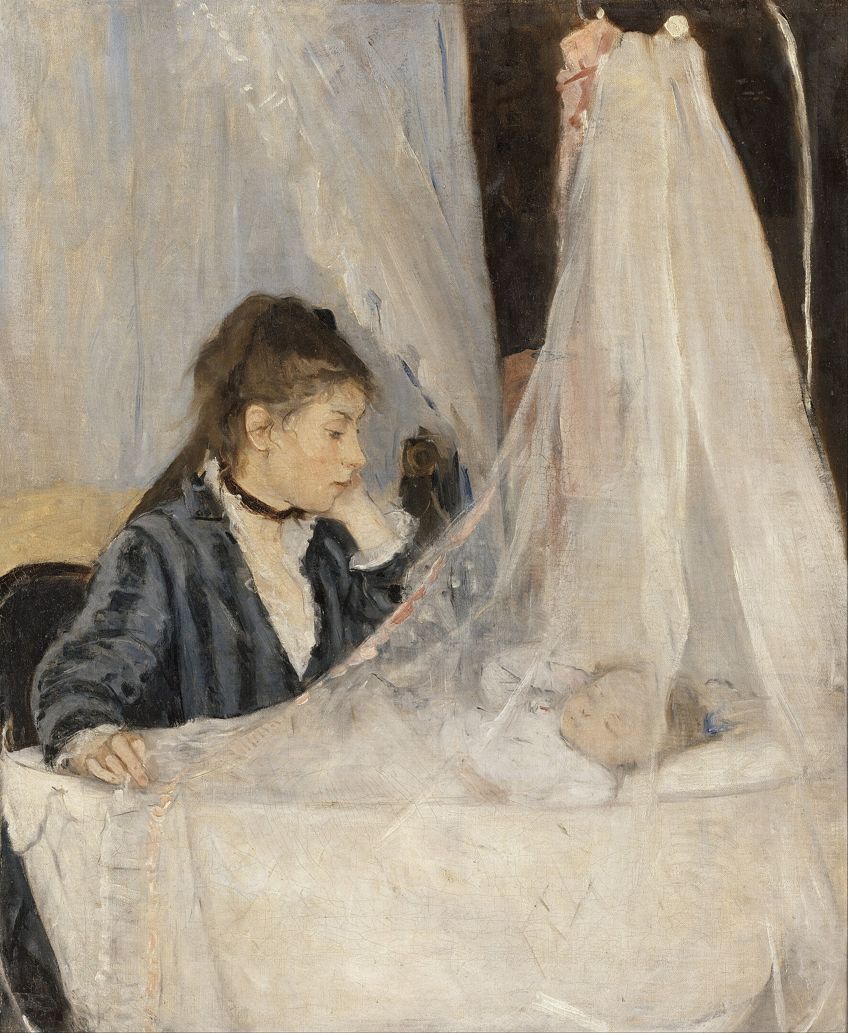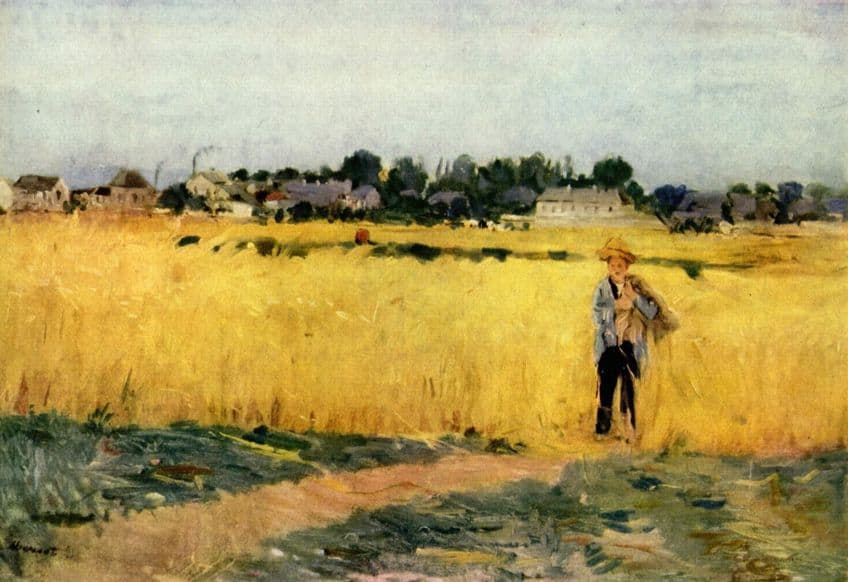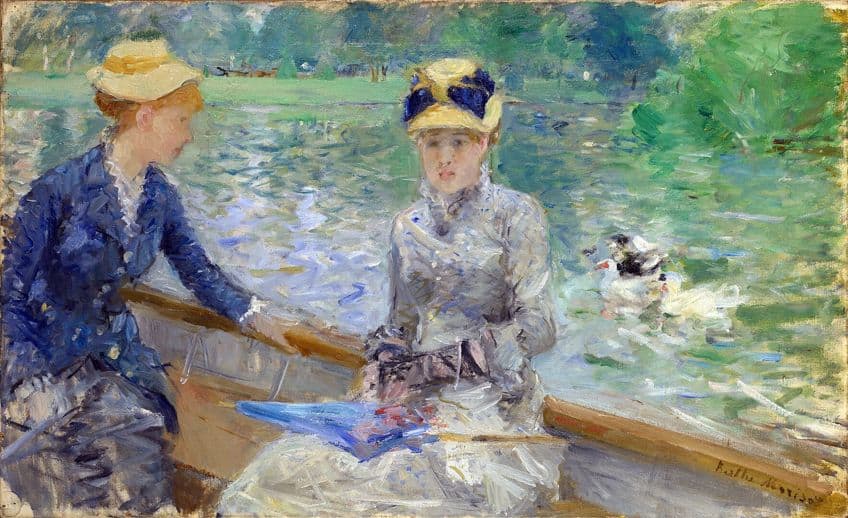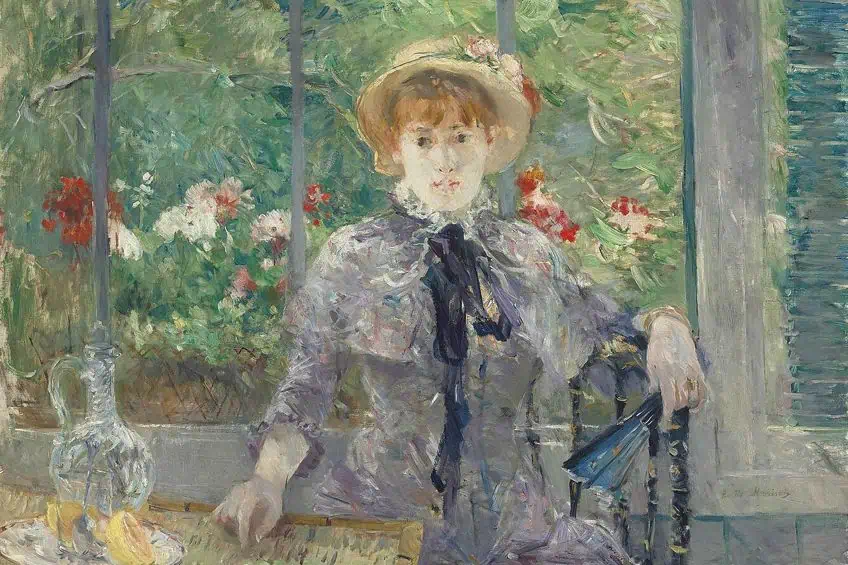Berthe Morisot – A Female Pioneer in 20th-Century Impressionism
Berthe Morisot, a pioneering figure in Impressionist art, captivated the art world with her innovative approach to capturing everyday life and the fleeting moments of modernity. Born in 1841 into a family of artists, Morisot defied societal norms to pursue her passion, becoming one of the few women of her time to achieve recognition in the male-dominated art scene. Her distinctive style, characterized by delicate brushwork and a keen eye for color and light, not only contributed significantly to the Impressionist movement but also challenged conventions, paving the way for future generations of female artists.
Key Takeaways
- Berthe Morisot was a foundational French painter in the Impressionist movement.
- Her upbringing and education positioned her to challenge gender norms in 19th century art society.
- Morisot’s legacy endures through her distinctive style and the barriers she overcame.
Early Life and Art Education
| Birth | January 14, 1841 |
| Death | March 2, 1895 |
| Place of Birth | Bourges, Cher, France |
| Genre of Work | Impressionism movement |
Berthe Marie Pauline Morisot was a significant figure in the art movement known as Impressionism. Born on January 14, 1841, in Bourges, France, she built her reputation in a predominantly male-dominated art scene. As a French painter, Morisot was not just part of the Impressionist circle; she was crucial in shaping its direction and exhibited her work regularly alongside other notable artists of her time.

Morisot was introduced to the arts at an early age and received her education from accomplished painters such as Jean-Baptiste-Camille Corot. Her bold choices and dedication to her craft saw her defy the conventional roles expected of women in the arts during the 19th century. Blending domestic life and professional ambition, her work included a mix of portraits, landscapes, and still lifes, showcasing her unique perspective and artistic prowess. Her legacy, bolstered by her contributions to Impressionism and the challenges she overcame, continues to inspire discussions about the role of female artists in art history. Through her marriage to Edouard Manet’s brother, Eugène, Morisot became deeply embedded in the art world, further allowing her to refine her style.
She painted with notable figures like Monet and Renoir, adding depth and breadth to her experience and influence.
Influences and Mentors
Young Berthe was introduced to the arts early on. Her lessons began with Joseph Guichard, a French painter who equipped her with fundamental artistic skills. Guichard also provided vital connections to the Parisian art scene, notably introducing her to the landscape painter Camille Corot. Corot was a pivotal mentor in her development, nurturing her impressionist style with his influence of delicate brush strokes and a keen sense of light.

Family Support and Artistic Beginnings
The Morisot family, consisting of her mother, who was related to Jean-Honore Fragonard, a noted Rococo painter, and her sisters, Yves and Edma, played a supportive role in Berthe’s artistic upbringing. Edma, in particular, was both her sibling and closest collaborator. Together they trained and developed as artists at a time when the Académie des Beaux-Arts excluded women.
Their family support was crucial, providing a foundation that allowed Berthe to pursue her passion for art in a male-dominated field, leading to her first exhibition in the prestigious Salon in 1864.
Career and Contribution to Impressionism
Berthe Morisot emerged as a pivotal figure within the Impressionist movement, her career intertwined with the group’s avant-garde exhibitions and collaborations with notable artists, including Édouard Manet. She continued to challenge societal norms and contribute significantly despite the resistance she faced as a female painter in late 19th-century France.

Collaboration With Édouard Manet
Morisot formed a significant professional relationship with fellow artist Édouard Manet. Their collaboration had profound effects on their respective works, as Morisot influenced Manet’s transition toward Impressionism with her light brushwork and outdoor scenes.
Manet, in turn, inspired Morisot’s exploration of modern-life subjects and influenced her palette.
Participation in Impressionist Exhibitions
Morisot was actively involved in the Impressionist exhibitions that began in 1874 in Paris. She exhibited her work in these seminal events alongside Claude Monet, Pierre-Auguste Renoir, Alfred Sisley, and Edgar Degas. As a core member, Morisot participated in all but one of the group’s exhibitions, asserting her prominence within the movement.

Artistic Accomplishments
Morisot’s artistic accomplishments include her nuanced depictions of private domestic life and her focus on women in everyday settings. Her works often portrayed the lives of contemporary women, from the leisure classes to the working women of Paris.
Morisot’s paintings are characterized by a distinctive use of color, light, and fluid brushstrokes, echoing the ethos of the Impressionist movement.
Pioneering Female Artist
As a pioneering female artist, Morisot overcame the gender biases of her time, becoming a respected member of the predominantly male Impressionist circle. She was among the few women who gained entry to the Salon de Paris, the official art exhibition of the Académie des Beaux-Arts in Paris, which significantly shaped the careers of French painters.

Artistic Style and Techniques
Berthe Morisot was known for her Impressionist style that emphasized the fleeting qualities of light and color. Her works often featured portraiture and domestic life, employed innovative brushwork, and captured landscapes through the technique of en plein air painting.

Portraiture and Domestic Life
Morisot’s portraiture captures intimate aspects of domestic life, particularly focusing on women and children. The Cradle, one of her celebrated pieces, showcases a mother gazing at her child. Such personal moments are portrayed with a soft, fluid brushwork that contributes to the overall tender atmosphere of the scene. Her own daughter, Julie, was a frequent subject, as seen in paintings like Julie Daydreaming and Reading.
Some of her other important portraiture artworks include Woman at Her Toilette (1875 – 1880) and Reading (1873).
Landscapes and En Plein Air
Morisot’s landscapes manifest her ability to capture the transient effects of light and atmosphere characteristic of the Impressionist movement. Employing the en plein air technique, she painted scenes from nature directly onto the canvas outdoors, a method that allowed for a fresh, spontaneous approach. This can be seen in her rendering of seascapes and garden scenes where the immediacy of her impression is effectively conveyed through a vibrant palette and dynamic brushstrokes.

Innovations in Brushwork and Color
Morisot often applied paint in a loose, rapid style, a departure from the traditional, meticulous brushwork of her contemporaries. She frequently used oil paints to create bold compositions filled with light and movement. Additionally, Morisot experimented with unprimed canvases, which absorbed the oil differently, lending a unique luminosity and texture to her work.
Her innovative use of brushwork and color brought a new energy to familiar subjects and contributed significantly to the evolution of the Impressionist style.
Legacy and Influence
Berthe Morisot’s legacy is multifaceted, impacting women artists, French art, and museum collections globally, and her influence persists in modern art circles.

Impact on Women Artists
Morisot served as a pivotal figure and role model for women in the arts. As an integral member of the Impressionists who defied the norms of her time, she paved the way for future female artists to pursue their profession.
Morisot’s dedication to her craft and her success in presenting work alongside her male peers at exhibitions challenged the traditional constraints and inspired generations of women artists that followed.
Recognition Within French Art
In the realm of French Art, Morisot gained posthumous recognition for her contributions to the Impressionist movement. Art critic Gustave Geffroy included her among the “three grandes dames” of Impressionism in his 1922 book, L’Histoire de l’Impressionnisme. This acknowledgment within the historically male-dominated French art scene underscored her significance and demonstrated the lasting impact of her oeuvre.

Commemoration and Exhibits
Morisot’s works are esteemed in prestigious art institutions worldwide. Notably, the Louvre Museum in Paris and the National Museum of Women in the Arts in Washington, D.C. showcase her paintings, allowing her artistic vision to be celebrated and studied by a wide audience.
These institutions play a crucial role in preserving her legacy through their exhibits and collections.
Legacy of Berthe Morisot Today
Today, Berthe Morisot is heralded as a leading figure in art history, and her innovative techniques continue to influence contemporary art. Her legacy is not only encapsulated in her bold brushwork and choice of subjects but also in the way she has inspired 20th-century art movements. Morisot remains a testament to enduring artistic excellence and a beacon for aspiring artists.

Berthe Morisot’s legacy endures as a testament to her remarkable talent and groundbreaking contributions to the art world. Through her masterful brushwork and keen observation of the world around her, Morisot not only helped shape the Impressionist movement but also broke barriers for women artists, inspiring generations to come. Her paintings, suffused with light and emotion, continue to enchant viewers and serve as a reminder of her enduring impact on art history. Berthe Morisot’s legacy remains an integral part of the rich tapestry of artistic innovation and expression.
Frequently Asked Questions
What Is Berthe Morisot Known for in the Art World?
She is renowned for being a pivotal figure in the Impressionist movement. Morisot gained respect for her persistent participation in the Impressionist exhibitions despite societal challenges.
How Did Berthe Morisot Contribute to the Impressionist Movement?
Berthe Morisot was instrumental in the movement by exhibiting her works with other Impressionists, advocating for the new style, and breaking through the norms of what was acceptable for women artists of her time.
What Are the Characteristics of Berthe Morisot’s Painting Style?
Morisot’s style is characterized by her use of light and rapid brushstrokes intended to capture the essence and spontaneity of the moment. Her paintings often exhibit a delicate touch with a focus on domestic life and feminine subjects.
Jordan Anthony is a Cape Town-based film photographer, curator, and arts writer. She holds a Bachelor of Art in Fine Arts from the University of the Witwatersrand, Johannesburg, where she explored themes like healing, identity, dreams, and intuitive creation in her Contemporary art practice. Jordan has collaborated with various local art institutions, including the KZNSA Gallery in Durban, the Turbine Art Fair, and the Wits Art Museum. Her photography focuses on abstract color manipulations, portraiture, candid shots, and urban landscapes. She’s intrigued by philosophy, memory, and esotericism, drawing inspiration from Surrealism, Fluxus, and ancient civilizations, as well as childhood influences and found objects. Jordan is working for artfilemagazine since 2022 and writes blog posts about art history and photography.
Learn more about Jordan Anthony and about us.
Cite this Article
Jordan, Anthony, “Berthe Morisot – A Female Pioneer in 20th-Century Impressionism.” artfilemagazine – Your Online Art Source. May 21, 2024. URL: https://artfilemagazine.com/berthe-morisot/
Anthony, J. (2024, 21 May). Berthe Morisot – A Female Pioneer in 20th-Century Impressionism. artfilemagazine – Your Online Art Source. https://artfilemagazine.com/berthe-morisot/
Anthony, Jordan. “Berthe Morisot – A Female Pioneer in 20th-Century Impressionism.” artfilemagazine – Your Online Art Source, May 21, 2024. https://artfilemagazine.com/berthe-morisot/.



